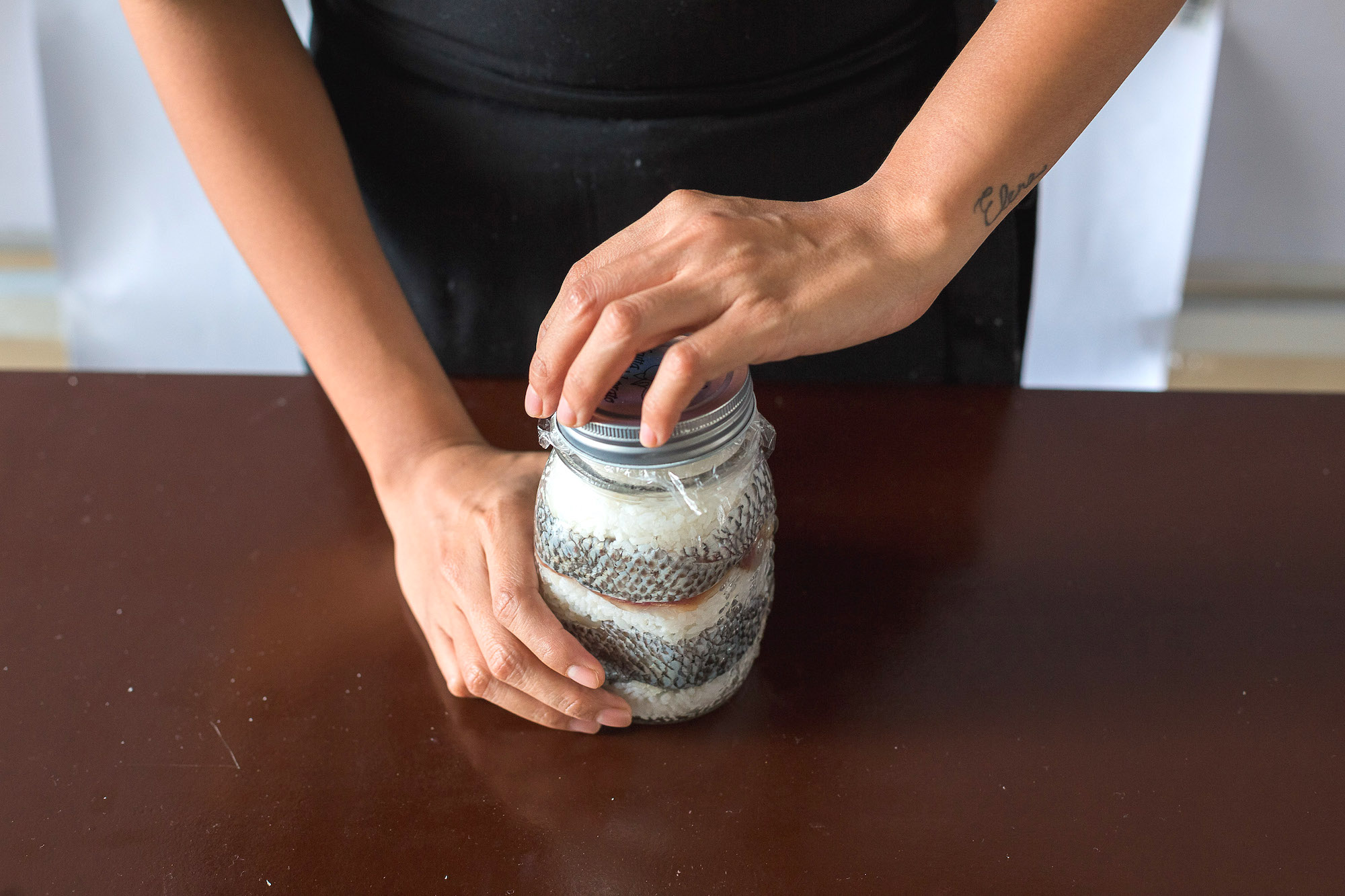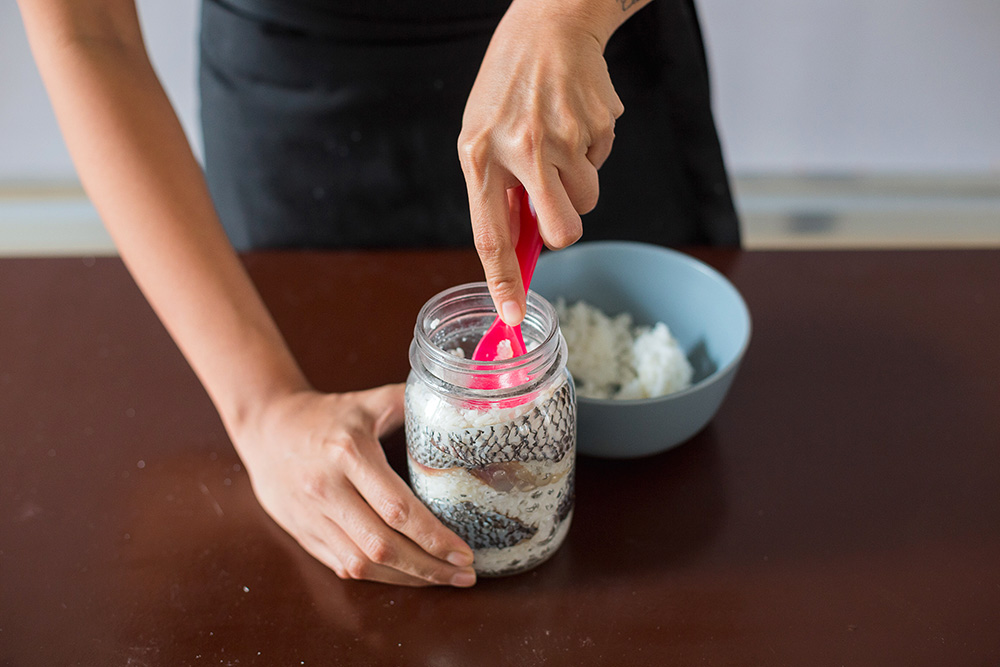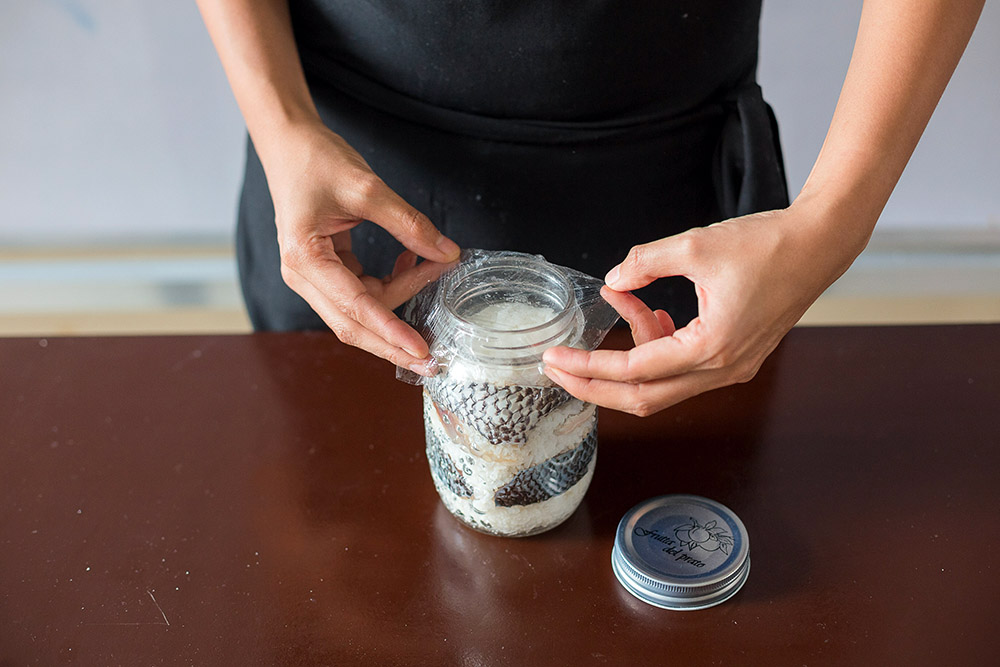The mere mention of buro inspires either intense delight or a quickly wrinkled nose depending on who you’re talking to. It’s just one of those polarizing condiments.
For those who love it, buro adds umami and tang to a dish. As a side dish, it provides a strong counterpoint that refreshes the tongue while enjoying fried food and boiled vegetables. For those who aren’t as enchanted, the first whiff sends them far, far away.
My first encounter with burong isda was in the public market of Camiling, Tarlac, which is my mother’s hometown. I remember being drawn to a display of large, colorful jars of filleted and butterflied fish attractively layered with rice. For a few pesos, you could walk away with a small plastic bag filled with a few choice spoonfuls, good for a meal or two. A kilogram costs a couple hundred pesos.
The term binuro means pickled or preserved with salt. Burong isda is just that— fresh fish and room temperature cooked white rice mixed with salt, tightly sealed, and left in a cool, dark place to ferment. Over time, it breaks down into a pungent, drab-looking mixture, which is then sautéed with a good amount of chopped tomatoes, onions, ginger, and garlic to make the ubiquitous condiment typically found on Ilocano tables.
Back in my grandmother’s kitchen, our cook prepared some for us to go with fried fish and vegetables. Served sautéed, it took on a rosier hue. The first bite was a revelation. Stinky and pungent, buro has a complex taste. You get the tang of fermentation, a little sweetness, and a salty linamnam (umami) that makes even modest meals a joy to eat.
For something made out of ordinary ingredients, buro is definitely greater than the sum of its parts.
Equipment
Tray
Mixing bowl
Wooden spoon
Cling wrap
Sterilized jars and lids
Ingredients
1 kg tilapia or dalag (mudfish), filleted and thoroughly cleaned
6 cups of cooked rice, cooled
6-7 tbsp rock salt
Onions
Garlic
Ginger
Tomatoes
Cooking oil
The level of sourness depends on the number of days it is allowed to ferment so check and taste until it achieves your desired flavor.
Procedure
1. Place fish fillets on a clean, dry colander with a plate underneath. Sprinkle each side with salt. Set aside.
2. Mix cooked rice with the remaining salt.
3. Get a clean, sterilized jar and layer the rice and salted, drained fillets. Start with the rice to ensure the mixture is evenly packed with no air pockets. Repeat until you use up the ingredients.
4. Cover mouth of the jar with cling wrap, then tightly screw on the lid. Place in a cool, dark place for 5 to 8 days. Every 2 to 3 days, you can check each jar and push the mixture down so it is covered by the expelled liquid.
5. Once your buro is fermented to your liking, you may cook it. Sauté onions, ginger, garlic and tomatoes until softened. Add buro and a little water to thin it out. Stir until cooked and adjusting seasoning as preferred.
Originally published in F&B Report May-June 2015










